2. Internal Structure of the Earth
5.0(15)
Card Sorting
1/10
Study Analytics
Name | Mastery | Learn | Test | Matching | Spaced |
|---|
No study sessions yet.
11 Terms
1
New cards
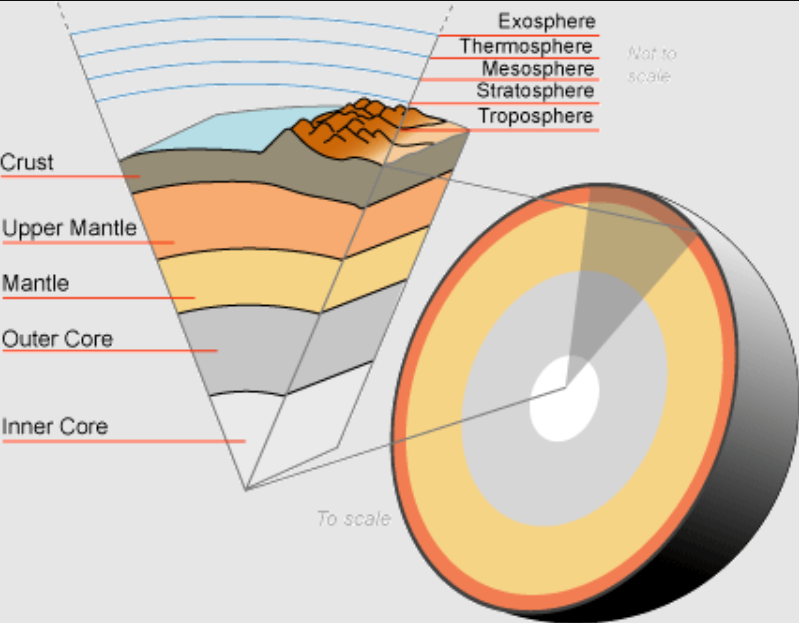
Crust
* ==Outermost==, ==thinnest== layer
Composed of @@rocks and minerals@@
* Iron (Fe), Calcium (Ca), Hydrogen (H), Aluminium (Al), Silicon (Si), Oxygen (O), Sodium (Na), Potassium (K), Titanium (Ti)
* **Continental crust** - %%Thicker%%, %%lower%% density
* **Oceanic crust** - ^^Thinner^^, ^^higher^^ density
Composed of @@rocks and minerals@@
* Iron (Fe), Calcium (Ca), Hydrogen (H), Aluminium (Al), Silicon (Si), Oxygen (O), Sodium (Na), Potassium (K), Titanium (Ti)
* **Continental crust** - %%Thicker%%, %%lower%% density
* **Oceanic crust** - ^^Thinner^^, ^^higher^^ density
2
New cards

Mantle
* ==Beneath== the crust
* Composed of mostly @@silicates, namely Silicon (Si), and Oxygen (O)@@
* Convection current is present
* %%Hot%% air %%rises%%
* ^^Cold^^ air ^^sinks^^
* Composed of mostly @@silicates, namely Silicon (Si), and Oxygen (O)@@
* Convection current is present
* %%Hot%% air %%rises%%
* ^^Cold^^ air ^^sinks^^
3
New cards
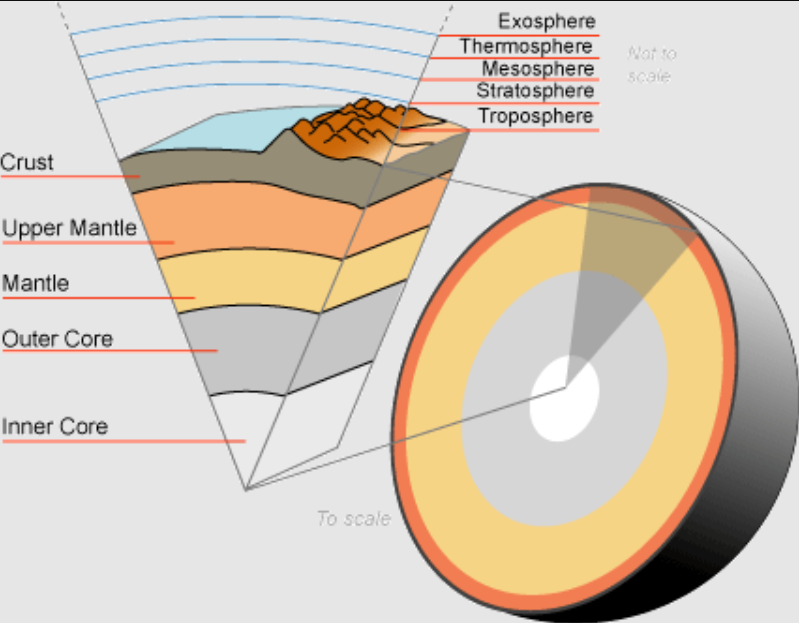
Outer Core
* Composed of ==Nickel and Iron==
* @@Liquid@@
* Liquid because there is not enough pressure for it to be kept solid
* @@Liquid@@
* Liquid because there is not enough pressure for it to be kept solid
4
New cards
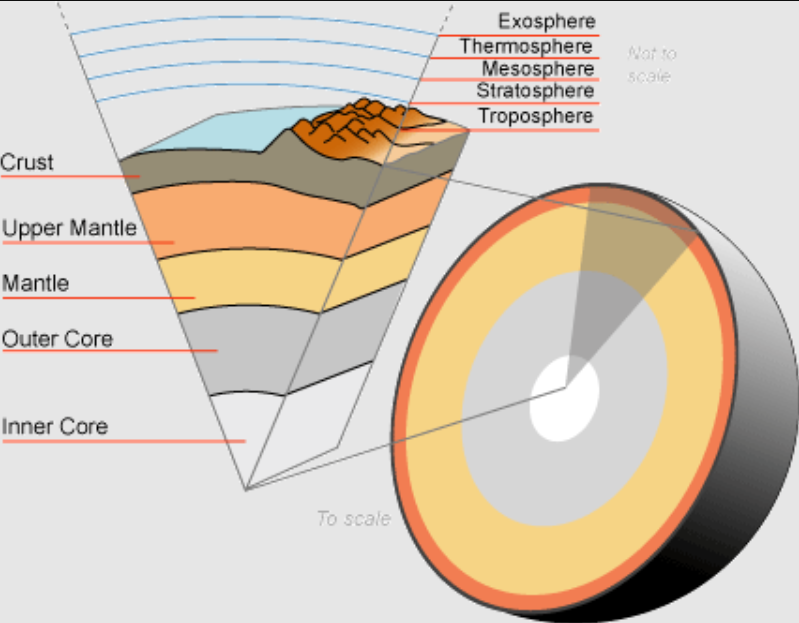
Inner Core
* Composed of ==Nickel and Iron==
* @@Solid@@
* Intense pressure -- prevents the iron in the core from melting
* @@Solid@@
* Intense pressure -- prevents the iron in the core from melting
5
New cards
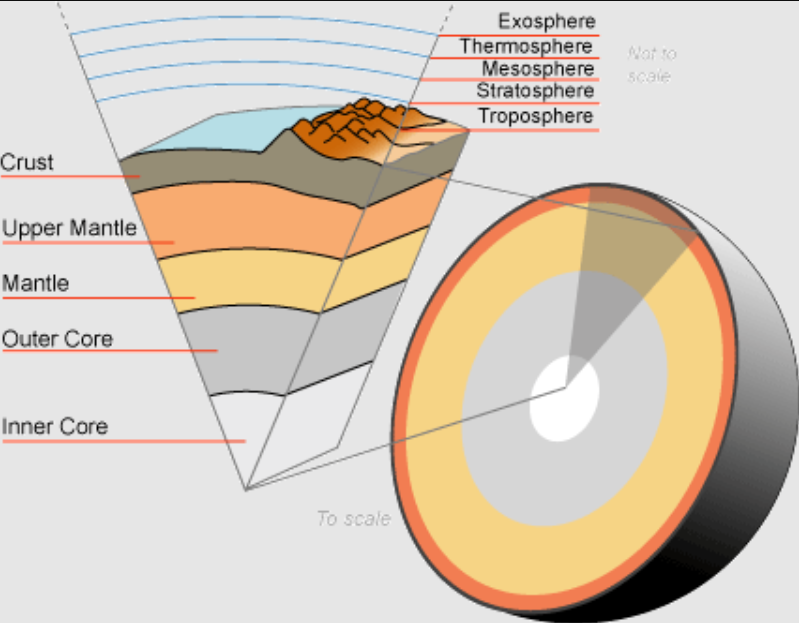
Lithosphere
* ==Solid, outer part== of the Earth
* @@Rigid and elastic layer@@ (@@upper mantle and crust@@)
* Rigid due to @@stress, temperature, and curvature of the Earth@@
* Coolest layer (literally.)
* Conducts %%heat from convection%%
* @@Rigid and elastic layer@@ (@@upper mantle and crust@@)
* Rigid due to @@stress, temperature, and curvature of the Earth@@
* Coolest layer (literally.)
* Conducts %%heat from convection%%
6
New cards
Oceanic lithosphere
==Thinner and denser== oceanic crust. Primarily composed of @@basalt@@.
7
New cards
Continental lithosphere
==Thicker and less dense== continental crust. Primarily composed of @@granite@@.
8
New cards
Characteristics of a plate
* Carries both ==continental and oceanic crusts==
* Floats on @@top of the asthenosphere@@ -- slides horizontally over it, bends slightly
* Moves very %%slowly%%
* Floats on @@top of the asthenosphere@@ -- slides horizontally over it, bends slightly
* Moves very %%slowly%%
9
New cards
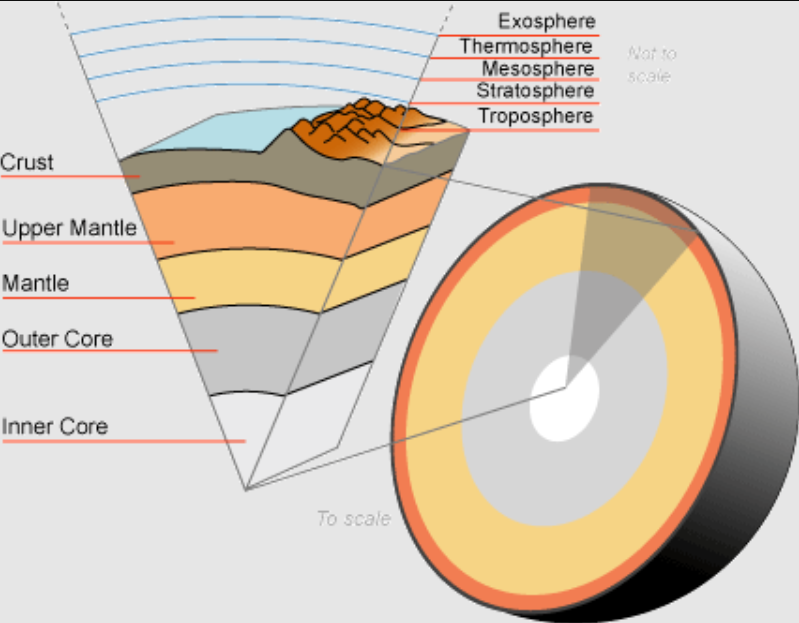
Asthenosphere
* Highly ==viscous== -- ==Rocks== flow like ==liquid== (Magma)
* High @@pressure and temperature@@
* High @@pressure and temperature@@
10
New cards
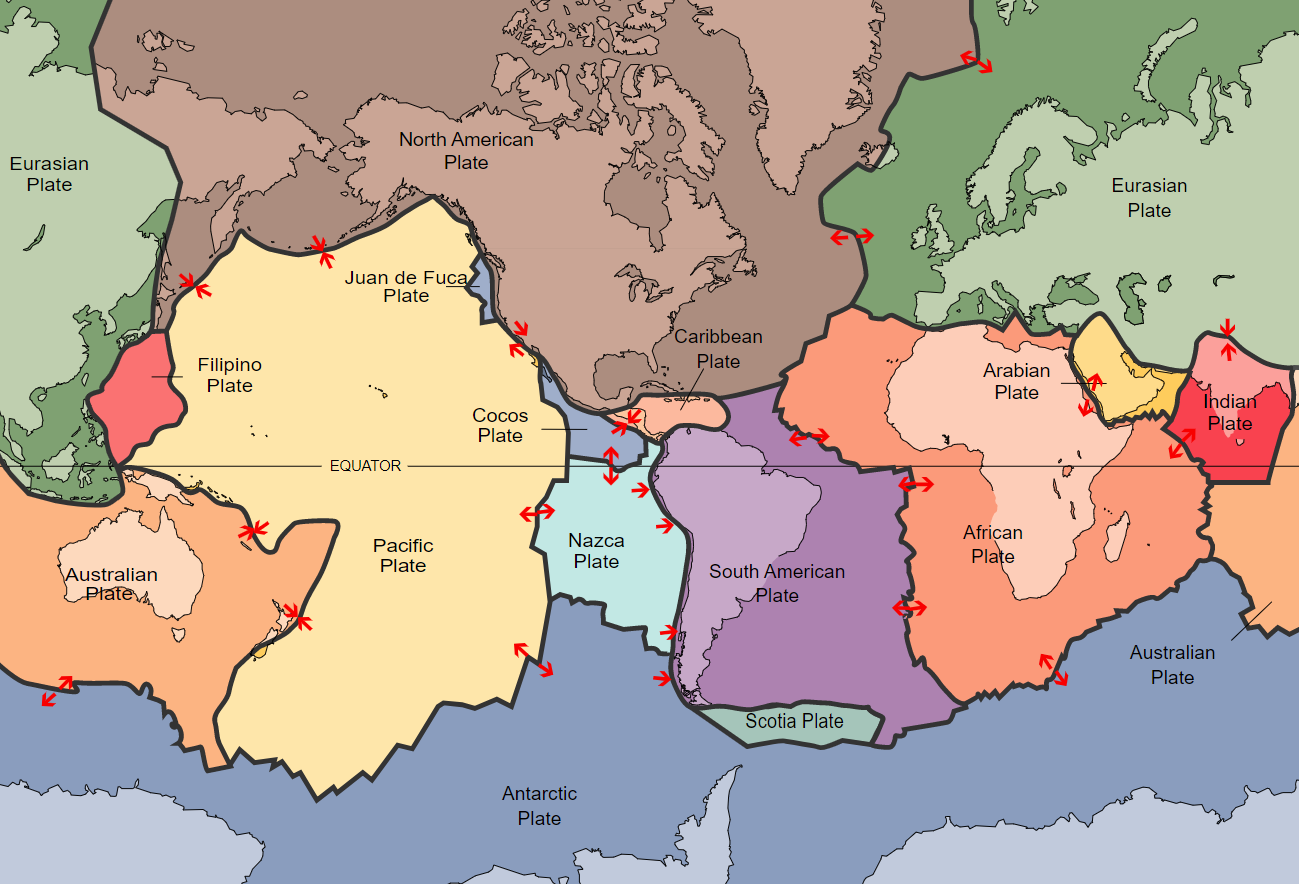
7 Major Plates
African, Antarctic, Eurasian, Indo-Australian, North American, Pacific, South American
11
New cards
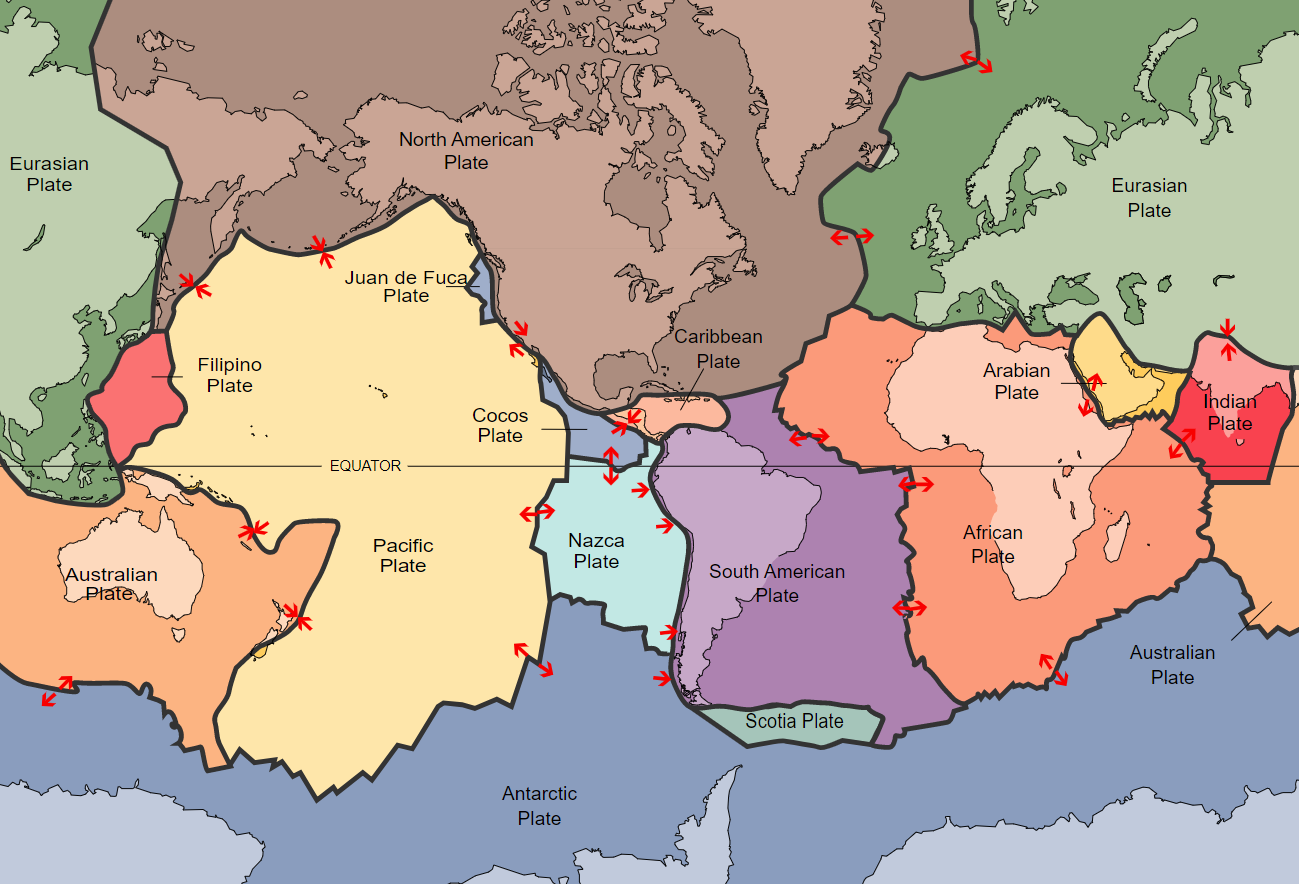
Examples of Minor Plates
Caribbean, Scotia, Arabian, India, Philippine, Juan de Fuca, Cocos, Nazca Plates